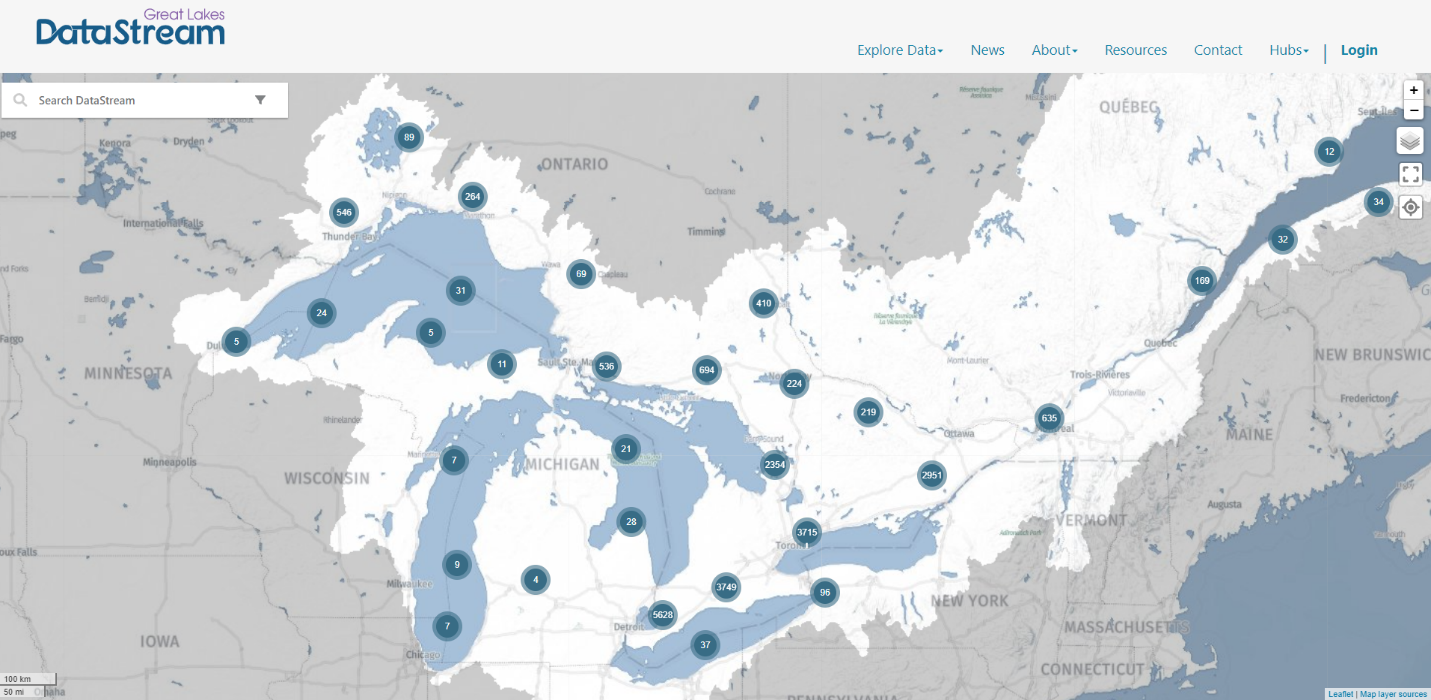Seagull - DataStream collaboration amplifies data in the Great Lakes

DataStream is excited about a new collaboration with the Great Lakes Observation System (GLOS) and their recently launched platform, Seagull.
Working collaboratively, GLOS and DataStream have developed an integration that connects Great Lakes DataStream with Seagull to make water data more accessible and easier to find. This integration allows seamless connectivity between the platforms by making datasets published on Great Lakes DataStream discoverable on Seagull.
This collaboration is all about reducing barriers to access by encouraging open data flows. Enhancing the accessibility of water quality data improves data discoverability, meaning more people can access extensive water data from across the Great Lakes and St Lawrence region.

The Seagull platform was launched in 2022 by the Great Lakes Observation System (GLOS) and includes data from buoys, water quality sensors, and other monitoring platforms.
Complementary systems teaming up
DataStream and Seagull share a commitment to supporting data-driven research, innovation, and decision-making in the Great Lakes. They are both open access, cloud-based platforms for sharing water data. With all of this in common, one might wonder whether we’re doing the same thing. But, rest assured this is not the case! Seagull and DataStream are quite different in form, function, in the data they contain, and in geographic scope.
Seagull brings together data from buoys, weather stations, sondes, forecast models, and more that can provide real-time updates about dozens of weather and water conditions, such as wind speed and water temperature. Seagull also provides information about biological parameters such as pH, chlorophyll, turbidity, and more.
By contrast, Great Lakes DataStream brings together data collected by people who do field monitoring and laboratory analysis on field samples. DataStream includes over a thousand water quality parameters including biological, physical and chemical, nutrients, metals, and organic pollutants. The nature of the data collection means these observations are not shared in real time.
Seagull’s focus geographically is on the Great Lakes themselves, whereas DataStream’s geographic focus is the watersheds that feed into the Great Lakes.
These two systems are highly complementary. They provide different pieces of the bigger picture on Great Lakes health.
The collaboration – how it works
This new collaboration between Seagull and DataStream connects the platforms in a way that allows data on DataStream to be discoverable on Seagull which is built to easily connect with other platforms to make Great Lakes monitoring data accessible to as many people as possible.
This means that people who are using the Seagull platform are able to see data that is available on DataStream. This includes over 8 million unique data points collected by over 50 organizations, including community-based monitoring groups, Indigenous Nations, researchers, and governments at all levels in the Great Lakes region.

Great Lakes DataStream brings water data together from across the entire basin, collected by diverse organizations including Indigenous and non-Indigenous governments, Conservation Authorities, community science groups, and academics.
Better data, better decisions
For the many monitoring groups using DataStream to publish their data, this new collaboration between DataStream and Seagull means a broader reach and greater impact.
Visitors to both platforms will benefit from greater insights into the water monitoring work happening within their watersheds. Whether deciding to spend a day on the lake or studying the impacts of climate change, users will have access to high-quality, up-to-date information on the Great Lakes.
Integrations between data platforms offer opportunities to maximize the value of open data. By working together, DataStream and Seagull will ensure that people have access to the right data so that we can protect the Great Lakes that we love.


